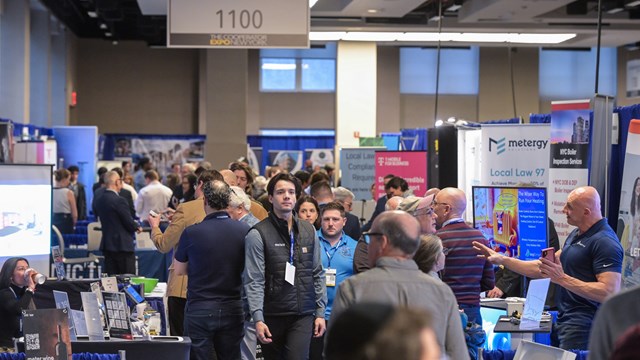
Whether doing chores such a laundry or using gym equipment or swimming pool, we want to maximize the time we spend doing the things we like, and make the less-pleasant jobs as hassle-free as possible. Residential buildings are in business to attract residents, and one of the best ways to do this is to offer the most up-to-date amenities. Residents may not even consider the technology at work in many of their building's amenities, but they'll certainly appreciate the convenience and value it adds to their lives and investment. Most everything we do in our day-to-day lives is technology driven, and that includes things as straightforward as the laundry facilities in our apartment building or the machines we use to stay fit. Today, shareholders and unit owners demand speed and efficiency, and would rather not to have to read a 1,000-page book to have it. The following is a look at what's new in some of the most commonly offered in-house amenities.
Buildings in which the amenities include laundry facilities want to make sure that a comfortable, clean and accessible environment is available to its residents. Seeing as how most people would rather be doing just about anything other than laundry, an efficient, pleasant laundry area can be a huge selling point for a co-op or condo building. If the washer-dryers in your building are looking a bit sad, or sound like jet engines on the spin cycle, it may be time for an upgrade to quieter, more energy-efficient, easier-to-use equipment. According to Howard Herman, vice president of Wascomat, a manufacturer of washer-dryers and professional ironers based in Inwood, "Front loading [washer-dryers] are not only more efficient for the user, but cost the building less, give a better "˜industrial' wash, and are handicap accessible." These aspects alone make this type of machine more desirable for all parties involved.
Yet another concern is safety, of both the resident and the resident's laundry. "There are also card-reading machines that will unlock the laundry room door, as well as keep a tally of how much money has been spent on laundry," says Herman. Pricing per wash and hours of access are left up to the building owner or management company, and the total can even be added to the shareholder's monthly maintenance or tabulated using a debit/credit method wherein the cardholder can add money to the card and have it be deducted on a per-use basis. "This increases cash flow and decreases the time spent in laundry preparation," Herman points out.
Another vendor offering their clients the option of card-operated washer-dryers is SEBCO Corp., a New Jersey-based company that services and installs laundry-room equipment in co-ops and condos from New York to Florida. SEBCO president Steven Breitman sees credit/debit card-operated "smart card" systems as becoming a larger part of its business in the years to come.
These credit or debit card machines offer an alternative to coin laundries, but one drawback is they are more costly to install. The hardware required to handle a credit card system is very expensive versus a coin machine, somewhere in the neighborhood of $5,000 - plus wiring and an extra telephone line, says Breitman. Each machine also needs a card reader, he adds.
Beyond the initial expense of installation, says Breitman, how they work is pretty simple. "Basically, you add value to a smart card - it's a laundry card with a computerized chip in it, sort of like a MetroCard." Residents can purchase the smart laundry cards and put preset values of $10 to $100 on them. Operationally, you can choose to accept all types of credit cards, batch-total all receipts, and kill the credit cards that were invalid or unauthorized. You can even check and verify every card so that unauthorized ones are not allowed to go through, Breitman says.
The speed of this new generation of washing machines and clothes-dryers is based on the fact that the machines are capable of holding more pounds of laundry than their predecessors. Despite their increased volume and weight capacity, higher pound-capable machines fit into the same spaces the older top-loading machines did. All of these advances allow residents to stay in-house to get their daily chores completed. Whereas top-loading machines limited the types of laundry tenants were able to do, front-loaders are able to handle the blankets, comforters and larger items that previously had to be sent out for laundering. A building able to provide a quick trip to clean and efficient laundry room will fare better in attracting more tenants and a higher occupancy rate. So, with your laundry done and checked off the list, we can now move on to your personal chores and hit the fitness room.
Since the 1980's, many of us have incorporated a regular workout regimen into our daily schedules. (Not nearly enough of us, perhaps - but that's another article entirely.) In-house gyms and fitness centers have come a long way since the days of a couple of belt-driven treadmills, however. According to Steve Kass, president of American Leisure Corporation, a company specializing in recreational facilities and programming, recent technological developments in residential gyms have made working out feel a lot more like playing in.
One innovation changing the way co-op and condo residents utilize their building's fitness facilities is a new computer program called Fitlinx. "Fitlinx is a web-based program," says Kass, "that's compatible with almost every brand of fitness equipment, and offers a personalized training program." Because it's Web-based, users can access their Fitlinx information from anywhere in the world. Whether on vacation or traveling for business, their fitness regime is at your fingertips. Users are "coached" through the workout by the program; during any given exercise, it will tell you whether you are going too fast or too slow, with too much arc on the treadmill or not enough - which in turn ends up being a time-saver for the trainee.
Correct form equals the fastest results - but at what cost? "Our vendors offer us and our clients the lowest prices possible," says Kass, and in turn, a flat fee is negotiated with each building. Because more people are working out, it makes for a smarter and more knowledgeable clientele. "Residents will no longer accept generic equipment," says Kass. "They know the best brands, and that's what they get."
In addition to state-of-the-art gyms, some buildings are offering play areas for children, computer rooms, swimming pools, game rooms and myriad of other facilities. But residents need not be daunted by all the high-tech gadgets and gizmos infiltrating their buildings, says Kass. "Technology has actually made the use of all this equipment easier. The programs we use in any of our facilities are very user-friendly and intuitive."
So check your "To Do" list and check off the workout. After chores and sweat, what better than some quality you-time in your building's garden, or up on the roof deck?
Green spaces - like gardens or roof decks - in co-ops and condos are lovely to have, and recent advancements in their care and upkeep have made them easier than ever to cultivate and enjoy, according to Madelyn Simon and Len Marino of Madelyn Simon & Associates, a garden and landscaping company in Manhattan.
First off, there is the advent of drip irrigation. Generally used in outside spaces, drip irrigation virtually eliminates the need for residents or building staff to spend time watering the plants. Less time watering equals more time enjoying and relaxing in the space. Furthermore, this advancement assists in the effort to conserve water. "The controls in the drip irrigation system alone have come a long way," says Simon. "They're much more reliable and can be set to water with very little interaction required."
Chemically speaking, there are several relatively new and newly updated ways to keep gardens, green roofs, and roof decks looking nice - not to mention safe - during New York winters. "Growth retardants assist in the hedging of plants and bushes," says Marino, adding that their use saves time come spring. "Also, the retardant compacts the foliage and makes it look more attractive," adds Simon.
Another important trend, Simon points out, is that of the "green" roof. A green roof, simply put, is when the roof of a building is covered with a waffle-like base material and then planted with grass or other like foliage over the entire area. Besides providing an actual lawn in the sky, this European trend has other benefits as well. A green roof will actually act as an insulator for the building, trapping cool air in the summer as well keeping the heat in during New York cold snaps. "This is becoming more and more common in New York," says Simon. "Rumor has the Jacob Javits Convention Center is on the next-to-be-green-roofed list."
There it is. An entire day spent - very pleasantly and productively - in your building, thanks to some new technological innovations. The role of microchips and clever engineering in these amenities may go unremarked"¦but then, that's kind of the point. If you are not noticing the fact you are using this technology, the laundry, the workouts and the quiet time spent in your building's green spaces are less taxing and more enjoyable. So the next time you toss a load into the dryer in your building's tricked-out laundry room, or spend a leisurely hour or two basking in your roof garden, see if you can spot the latest technological addition or advancement in your everyday life.






Leave a Comment